Costing US$32 million a pop, the U.S. Air Force MQ-9 Reaper drone can be armed with a variety of weaponry, including up to eight laser-guided Air-to-Ground Missile-114 Hellfire. Also known as “Predator B”, the unmanned aerial vehicle (UAV) can loiter at up to 50,000 feet for more than 27 hours, gathering intelligence with sophisticated cameras, sensors and radars.
The Reaper, therefore, provides a unique capability to perform strike, coordination, and reconnaissance against high-value and time-sensitive targets. It is a great candidate to perform missions like intelligence, surveillance and reconnaissance, close air support, combat search and rescue, precision strike, convoy and raid overwatch, route clearance, and terminal air guidance.
On Tuesday (March 14), the U.S. lost one of them over the Black Sea. Pentagon said two Russian Su-27 fighter jets had intercepted its “surveillance” drone, which was flying in the international airspace. One of the Russian jets was accused of intentionally flying in front of the Reaper and dumped fuel on the drone several times, before colliding with the American drone.
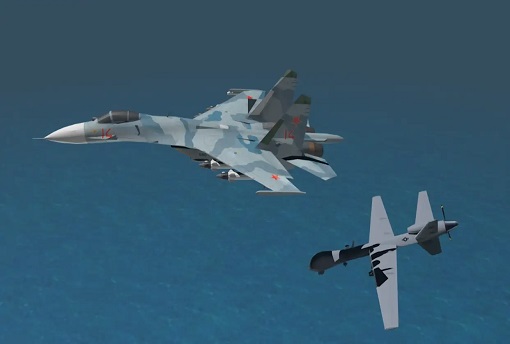
The U.S., obviously upset, has claimed the Su-27 fighter jet struck and hit the propeller of its deadly and expensive drone, causing it to crash in international waters southwest of Crimea. Pentagon has also condemned the Russian pilot of behaving in a “reckless, environmentally unsound and unprofessional manner.” However, Russia had given a different version of events.
The Russian Ministry of Defense said that the American drone had been flying near the Russian-occupied Crimean Peninsula and was headed toward the Russian border with its “transponder switched off”. Two Russian Su-27 fighter jets were scrambled to intercept the “unidentified” drone. Exactly why was the U.S. drone flying thousands of miles away from home near the Russian border?
Had Russia or China sent a military spy drone capable of unleashing air-to-surface missiles near Los Angeles, the U.S. would have shot it down. Make no mistake – the Russian Su-27 jets were more than capable of shooting down the Reaper. But doing so will be an act of war. At the same time, the nuisance, which has been going on for a very long time, cannot be ignored.
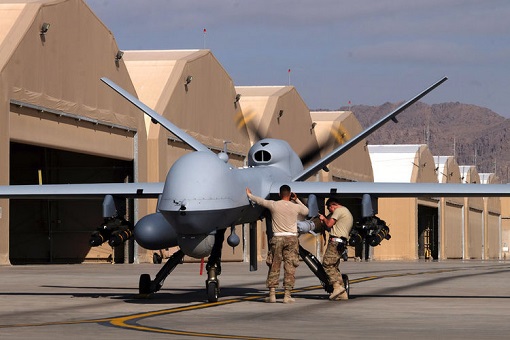
Anatoly Antonov, Russia’s ambassador to the United States, said that the MQ-9 Reaper drone was conducting “unacceptable” activity in the vicinity of Russia’s borders. He also revealed that American drones in the area were spying and collecting data before passing them to Ukraine to enable it to conduct strikes on Russian territory, apparently referring to attacks in Crimea.
While Moscow has denied Washington’s accusations that its jets acted recklessly, it did not mention anything about the naughty act of dumping fuel on the drone. Instead, it has blamed “sharp manoeuvring” by the drone for the crash, claiming its jet did not make contact. Both the U.S. and Russia acknowledged that no weapons were used during the downing of the drone.
Today, the U.S. Department of Defence released a 40-second declassified video clip in an attempt to prove that the Russian Sukhoi Su-27 was responsible for the crash of its drone. The video was from a camera on the MQ-9 Reaper drone being pointed backward toward its tail and propeller. A Russian jet can be seen approaching the rear of the drone and began releasing fuel.
Suspiciously, the video feed was briefly disrupted as the Russian jet was passing over the drone, presuming continuously dumping the fuel. The propeller appeared to be in working condition and undamaged when the video feed resumed. When the jet came back for another approach, once again releasing fuel, the video feed was suddenly cut by 60 seconds.
When the camera finally resumed its video feed, the propeller appears damaged. In short, there’s “no evidence” that the Russian jet had actually – physically – struck the American drone’s propeller. One has to remember that the Su-27 fighter jet is not a Tesla car which can slow down to the same speed of the drone and throw a brick at the propeller to damage it.
Not only you need a Russian pilot with balls of steel to commit suicide by hitting the drone with his own jet, but it’s also impossible to do so without suffering considerable damage to the Su-27. Every fighter jet’s nose is packed with expensive, sensitive and fragile electronics such as radar and sensors. It’s not a truck that can be used to ram into a drone with a weight of about 4.5 tonnes.
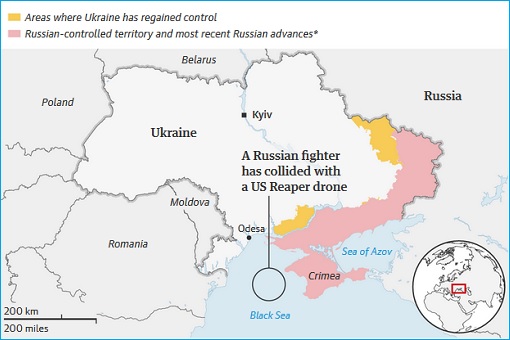
At most, the U.S. can accuse Russia of harassing its drone by dumping fuel to blind its optical instruments and drive it out of the area. Besides, why didn’t the Pentagon show the entire video-clip of the incident without resorting to cutting here and there to suit their purpose? The U.S. has to prove that the Russian jet had come into contact and collided with its drone and damaged its propeller.
Defense Secretary Lloyd J. Austin said that the incident would not deter such surveillance flights, insisting that “the United States will continue to fly and to operate wherever international law allows.” Well, in the same breath, Moscow can also say Russia will continue to intercept and dump fuel on enemies drone wherever international law allows.
Washington can easily use the incident as an excuse to extract concessions from Moscow, or even launch a military strike at Russia. On June 20, 2019, Iran shot down a U.S. RQ-4A Global Hawk surveillance drone. In retaliation, U.S. President Donald Trump ordered a military strike against Islamic Revolutionary Guard Corps (IRGC) radar and missile sites, only to reverse the decision.
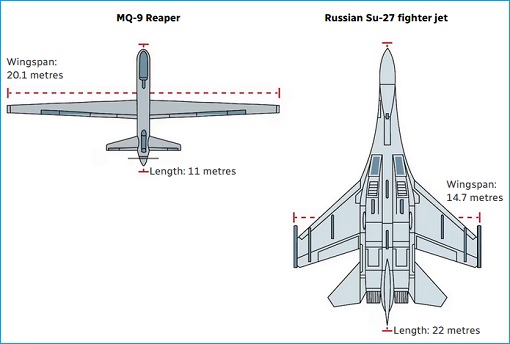
Instead, the U.S. retaliated with cyberattacks on the IRGC’s missile-control systems and announced new sanctions. The fact that President Joe Biden dares not retaliate militarily against President Vladimir Putin suggests that the U.S. can only afford to bully small nations, but not against military power like Russia. To save face, Washington has to accept that it was just “an accident”.
Still, America cannot explain why its drone was flying with its transponders turned off, if indeed “hunter killer” MQ-9 Reaper had no intention to violate the Russian airspace. Transponders are communications devices that allow the aircraft to be tracked. The U.S. used to accuse Russian ships of switching off their transponders to illegally deliver oil to Syria.
Besides, if the mission was reconnaissance and not to help Ukraine attack Russian territory, why can’t the U.S. Air Force use its Global Hawk drone, which was designed for purely long-range surveillance purpose? It can survey as much as 40,000 square miles (100,000 km2) of terrain per day, an area the size of South Korea or Iceland.
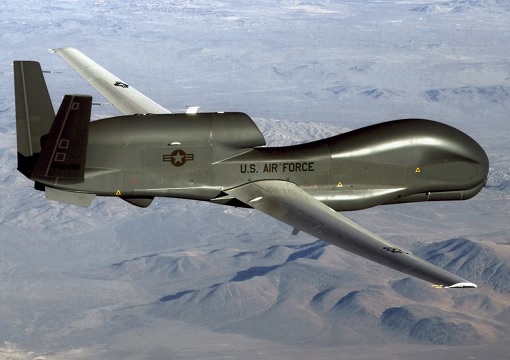
The Pentagon knew Russia had imposed flight restrictions in the area of the Black Sea because of its military operations in Ukraine, but still ignored it with a deliberate provocation. If the Kremlin wanted to, it could shoot down the drone and use the excuse that its transponders were turned off as a cover. And there’s nothing the U.S. can do unless it declares World War 3 with Russia.
More importantly, Russia has shown to its allies China and Iran how to bring down the Predator drone without firing a single shot. Unlike the American Air Force, who burned US$400,000 on supersonic infrared heat-seeking air-to-air missile Sidewinder to shoot down some harmless UFOs and balloon, it’s cheaper to crash the General Atomics MQ-9 Reaper with some fuel.
Other Articles That May Interest You …
- China Lectures Australia After Complains Chinese Jet Harassed Its Spy Plane – Dumping “Chaff” Which Sucked Into Engine
- Canada Air Force Complains “Unprofessional” Chinese Pilots Harassing Its Spy Plane – Sometimes Show “Middle Fingers”
- The U.S. And Australia Threaten To Invade Solomon Islands – Now Who’s The Bully And Aggressor?
- Australia-China Ties Remain Hostile – But New Zealand Upgrades Trade Deal With China That Could Bring Record $50 Billion
- Property Bubble May See China Demolish 90 Million Homes In Ghost Cities – Here’s Why It’s Really Bad News For Australia
- The Australia-US-UK AUKUS – It’s All About Arms Sales, And China Will Spend Even More On Military To Target Aussie
- Commodities Crash – How China Releases Metal Reserves To Tackle High Prices And Shortage
- Australia’s Beef Export Worth A$3 Billion To China May Not Recover – Permanently & Completely
- Trade Surplus Of $535 Billion – Not Even The U.S. Trade War Or Covid Pandemic Can Destroy China Economic Powerhouse
- Five Eyes Alliance Plans To Teach China A Lesson With Economic Sanctions – But It’s Easier Said Than Done

|
|
March 16th, 2023 by financetwitter
|


|

|

|

|

|

|




























Comments
Add your comment now.
Leave a Reply